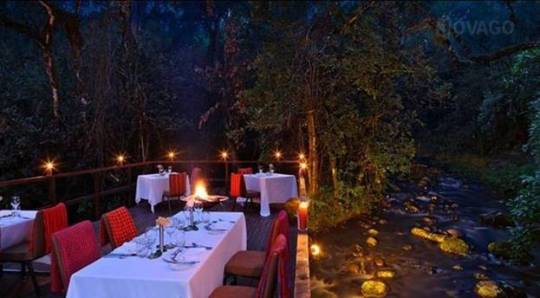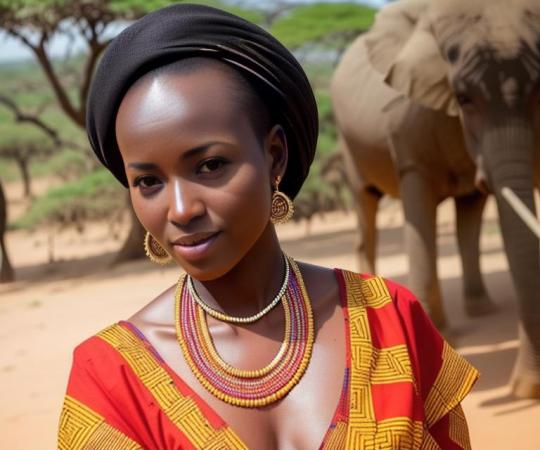#Lake Naivasha
Explore tagged Tumblr posts
Text


Lake Naivasha, Naivasha, Nakuru County, Kenya
Vladan Raznatovic
15 notes
·
View notes
Text
Shores of Serenity- Lake Naivasha
I stroll along the lake’s shore,Connected to the surrounding scenery,With each step, the unfolding beauty I adore,Embracing this scenic view, it captures me.Wondering about the untold stories,And the memories that have been created,The wind whispers softly through the trees,Caressing my dark skin with a gentle breeze.My afro-combed hair dances in the wind,I wave at Baba Bright as he casts his…

View On WordPress
3 notes
·
View notes
Text
Kenya Safari - Fix Departure on 30th November 2024
#ONCEuponaLIFEinKENYA #KenyaSafari Fix Departure on 30th November 2024 4 Nights / 5 Days Price Per Person on Sharing basis : USD 1180 Inclusions : ~ Airport transfers ~ Visit to #GiraffeCenter with snacks enroute ~ 1 night in #Nairobi on Bed & Breakfast ~ 2 nights in #MaasaiMara on Breakfast, Lunch, Dinner ~ 1 visit to the #MaasaiVillage ~ 1 night in #Naivasha on Breakfast, Lunch,…

View On WordPress
#adler#Adler Tours#Adler Tours and Safaris#Adler Tours Safaris#Africa#African Safari#African Safari Holidays#African Safari Packages#African Safari Tours#Budget African Safari#Budget Safari Trip#CAR HIRE#Car Hire In Rajkot#CAR ON RENT#Car On Rent In Rajkot#East Africa#family Holidays#Family Safari#Family Tour#Giraffe Center#Gujarat#India#Kenya#Kenya Safari#Lake Naivasha#Maasai Mara#Maasai Village#Masai Mara#Nairobi#Naivasha
0 notes
Text
Discovering the Natural Beauty and Tranquility of Lake Naivasha
Escape to the serene and picturesque Lake Naivasha, a stunning freshwater lake nestled in Kenya's Great Rift Valley. Lake Naivasha is a haven for bird watchers, with over 400 species of birds calling the area home, including the iconic African fish eagle. The lake's calm waters and surrounding landscapes make it a perfect destination for relaxation and adventure. Visitors can enjoy boat rides on the lake, where they may spot hippos lounging in the water and giraffes grazing along the shoreline. Nearby, Hell's Gate National Park offers opportunities for hiking, rock climbing, and exploring dramatic gorges. Whether you're looking to unwind in nature or embark on thrilling outdoor activities, Lake Naivasha provides a beautiful and tranquil retreat in the heart of Kenya.
0 notes
Text
https://www.steveandrichardsafaris.com/
Steve and Richard safari's, is specialist in East and Africa safaris, Kenya, Tanzania & Uganda. Tsavo East,and West, Amboseli,Kilimanjaro, Taita salt lick, Lake Nakuru, Lake Naivasha,Masai Mara Samburu,Sweet water, Mount Kenya,aberdarea, Ngorongoro,Serengati,Lake Manyara, Arusha . A best Creating travel memory of a lifetime takes enormous teamwork, and we completely understand this. With an onboard team of dedicated professionals, we always Endeavour to accomplish your travel needs and personalize your experience to build memories of a lifetime with our wide range of personalized services, we assure you to deliver the best value for your travel itineraries. Whether it’s outbound travel or inbound travel- outstation trips from Kenya and Tanzania, all cover popular excursions to explore.
#Steve and Richard safari's#is specialist in East and Africa safaris#Kenya#Tanzania & Uganda. Tsavo East#and West#Amboseli#Kilimanjaro#Taita salt lick#Lake Nakuru#Lake Naivasha#Masai Mara Samburu#Sweet water#Mount Kenya#aberdarea#Ngorongoro#Serengati#Lake Manyara#Arusha .#A best Creating travel memory of a lifetime takes enormous teamwork#and we completely understand this. With an onboard team of dedicated professionals#we always Endeavour to accomplish your travel needs and personalize your experience to build memories of a lifetime with our wide range of#we assure you to deliver the best value for your travel itineraries. Whether it’s outbound travel or inbound travel- outstation trips from#all cover popular excursions to explore.
1 note
·
View note
Text
Six Last-minute Easter Break Road Trips for Families
This year, Easter comes with an additional gift for families on school-term break; if you have some days saved up from your annual leave, then you can easily extend the holiday to catch up with Labor Day! Not possible? Then don’t fret, four days is long-enough a weekend to drive away and explore some of the treasures that we tend to ignore when we think ‘vacations”. It’s the perfect break to take…

View On WordPress
#bandas#Destination#Easter Holidays#Families#Family Getaways#Holiday#jumia travel Kenya#Kenya#Kiserian#Lake Magadi#Lbor Day#Lukenya Hill#Naivasha#Nakuru#Ngong’ Hills#Olorgesailie#Rongai#sagana#Swara Acacia Camp#Tafaria Castle Country Lodge#Travel
0 notes
Note
Hi! Love your blog and the information you share. Can we see some black herons? They are elegant goth water birds with beautiful plumage. They're also kind of goofy with their canopy feeding method, like a goth with a black parasol. Most people probably recognize them from a BBC series as the "Nighttime! Daytime!" bird. Recently, Ze Frank's True Facts featured black herons, "I mess with the fishes!" We need more black herons in our dashboards. Thank you!
Hello yes, absolutely, every hair on my body this is a really wonderful wading bird…


Black Egret aka Black Heron (Egretta ardesiaca), family Ardeidae, order Pelicaniformes, Lake Naivasha, Kenya
Photograph by Tony Castro


Using its wings to create shade, which may attract some small fish, but also reduces the glare over the water making it easier to find prey,  Marievale Nature Reserve, South Africa
Photograph by Derek Keats
653 notes
·
View notes
Text


Fisherman’s Camp, Lake Naivasha, Kenya.
04 June 1995.
61 notes
·
View notes
Text
Unit 05 Blog Post
I was brought up in Eldoret, a town that rests in the heart of Kenya, near one of the greatest natural wonders on Earth, the Rift Valley. The sheer scale of the Rift Valley, the largest of its kind, has always been a breathtaking sight for me. Spanning thousands of kilometers from Lebanon in the north to Mozambique in the south, the Great Rift Valley runs through Kenya, carving out a beautiful landscape that is both vast and rugged. Its significance in shaping nature and the lives of the people who live near it, including my own, is immense.

An image of the Rift Valley captured from the valley floor. See if you can spot the waterfall in the image above.
As a child growing up near the valley, I remember standing on its edge, staring into the seemingly endless horizon. The Rift Valley is more than just a geographical feature; it is a living, breathing ecosystem that has a dynamic relationship with the wildlife, vegetation, and communities that inhabit it. The valley is a cradle of biodiversity, home to a range of ecosystems from dry savannas and wide grasslands, dramatic escarpments and fertile plains.

An image of the Rift Valley taken from the edge.
Nature in the Rift Valley is something I came to appreciate deeply. The valley is a host to countless animals, including some of the most iconic species of East Africa, such as elephants, giraffes, zebras, and lions. The wide plains of the valley offer these animals plenty of space to roam, and it is not uncommon to witness them in their natural habitat when visiting nearby national parks like the Maasai Mara. The Rift Valley lakes, including Lake Naivasha and Lake Nakuru, are vital water sources for these creatures, making the valley a true haven for wildlife.
The valley's landscape is marked by dramatic features that are a testament to the forces of nature at work over millions of years. The escarpments, which rise steeply from the valley floor, provide stunning views that capture the vastness of the land. Standing at the edge of these cliffs, one can appreciate the sheer scale and geological history of the valley. It’s humbling to think that the Rift Valley was formed as a result of tectonic forces, with the earth’s crust pulling apart, creating the gaping chasm that now defines the region.
The beauty of the Rift Valley is not only in its grand scale and geological significance but also in the subtle details of everyday life. Whether it’s the cool breeze that sweeps down from the escarpments or the vibrant sunsets that light up the sky, the valley has a way of making you feel connected to something ancient and enduring. It is a constant reminder of the power and beauty of nature, a place where one can feel small yet part of something immense. Growing up near this natural wonder has shaped my view of the world, giving me an enduring love for nature and its complexities.
8 notes
·
View notes
Text
Unit 5 Blog Post: Citizen Science and Conservation Practices
Happy thanksgiving everyone!
Given that this week’s blog prompt is open, I wanted to share some thoughts inspired by our course content so far.
While watching Washington Wachira’s TED Talk "For the Love of Birds," I began reflecting on the role of citizen science. Apps like iNaturalist, which is widely used in Guelph, offer a powerful tool to connect people with nature by allowing users to log observations. However, they also inadvertently filter participation.
For instance, I’ve spoken with older individuals who possess immense knowledge of local flora and fauna but do not engage with these apps. Their insights are invaluable, yet their observations remain undocumented in digital platforms. This raises a concern: Are we excluding certain demographics from contributing to citizen science simply because of a technological barrier?
This issue highlights the need to design more inclusive citizen science initiatives. If older generations or non-tech-savvy individuals struggle to access these platforms, we may miss crucial knowledge. Digital platforms should be complemented with physical or analog extensions—perhaps logbooks or community-led observation notebooks that can be collected and digitized by volunteers.
During my time in Kenya, I witnessed how citizens live in harmony with their natural environment. Kenya’s incredible biodiversity, which spans savannahs, tropical forests, deserts, and highlands, surpasses that of Canada. Yet, despite this richness, much of the local knowledge remains undocumented in apps or digital tools. Conservation in Kenya requires more than just technological solutions—it depends on community engagement and biocultural conservation. One of my professors, Carol Muriuki, a conservationist with the National Environment Management Authority (NEMA), shared insights that transformed my understanding of conservation. She emphasized that conservation cannot follow a “one-size-fits-all” approach. Community stewardship and biocultural conservation is crucial for designing conservation initiatives that have a lasting positive impact. Instead of crafting a conservation plan that looks good on paper but is not feasible in the real world. Each initiative must account for ecological, economic, and cultural realities.
A compelling example is the Lake Naivasha region, where rising water levels—likely caused by climate change—are displacing communities that rely on the lake for food and income. As Carol explained, simply forcing people to relocate isn’t a viable solution. Instead, NEMA is working on a more holistic approach, such as restructuring hydrological infrastructure, planting mangrove trees, and compensating displaced families. This approach integrates the needs of both people and the environment, exemplifying how inclusive conservation practices can lead to sustainable outcomes.

Figure 1. Blurry view of Lake Naivasha from the campground in Kenya (Griffiths, 2024)
I see Carol’s work as a model for future conservation efforts, where citizen science plays a central role in shaping projects rather than just being a tool for data collection. For citizen science to be effective, it must evolve beyond passive contributions. It should foster continuous dialogue between scientists and the public, ensuring citizens actively participate in research and conservation initiatives. This approach could help address the issue of bias in scientific sampling. Scientists often focus on charismatic species—those that are easy to observe or already have a wealth of knowledge available from past studies. As opposed to cryptic or under-studied species. In contrast, citizen observations tend to be more exploratory, as participants are not constrained by preconceptions about which species are significant, enriching scientific understanding in unexpected ways.
One of the biggest takeaways from this course is the realization that academic science offers only a narrow lens through which to engage with nature. As students, it’s easy to become trapped within the confines of scientific rigor and overlook the many other ways people connect with the natural world. Yet, through this course, I’ve learned that storytelling, art, and lived experiences are equally powerful tools for interpreting the environment. For example, conservation is as much about understanding community needs as it is about protecting ecosystems. Similarly, citizen science is not just about data—it’s about fostering a deeper relationship between people and nature.
Ultimately, effective conservation requires both emotional and intellectual engagement. Successful initiatives depend on integrating scientific knowledge with community stewardship. Similarly, citizen science can only reach its full potential when it invites participation from all walks of life—from scientists, to tech-savvy citizens, and those more comfortable with traditional forms of engagement. As I reflect on what we’ve covered so far, I believe we are just beginning to scratch the surface of how we can engage an audience with nature. The challenge lies in finding new ways to connect with both people and the environment—whether through technology, community dialogue, or personal storytelling.
2 notes
·
View notes
Text

A Great white pelican from lake Naivasha, Kenya
Photo 📸 @sachin_rai_photography
15 notes
·
View notes
Text

Pink-backed pelican at Lake Naivasha, Naivasha, Nakuru County, Kenya
Vladan Raznatovic
#Pink-backed pelican#Birds#Pelicans#Pelican#Lake Naivasha#Naivasha#Nakuru County#Kenya#Wildlife#Africa#KenyaWildlife
4 notes
·
View notes
Text
idk why the various London and New York "ooo remembehs rhodesia" socialites and BAPoids haven't made a thing out of these degenerates. they seem like more realistic role models
Born Alice Gwynne (1898–1946), she was an American socialite, relative of the powerful Whitney and Vanderbilt families. Kiki and her second husband, Jeromy "Gerry" Preston (1897–1934) first moved to Kenya in 1926, after being offered land on the shores of Lake Naivasha by a friend. Kiki and her husband excelled as big game hunters. Kiki was also notorious for her drug use, especially her addiction to cocaine and heroin, and was one of the best clients of Frank Greswolde Williams, the chief drug dealer of the colony. She was nicknamed "the girl with the silver syringe", due to her habit of always carrying her syringe in her bag and publicly shooting drugs without regard for onlookers. Whenever she was out of supplies, she would send an aeroplane to get new ones. Kiki also had numerous affairs with men, including Prince George, Duke of Kent, whom she introduced to drugs, much to the dismay of the British royal family, which forbade them from meeting with each other. Kiki is often alleged to have borne a child out of wedlock from her affair with Prince George, who later became publishing executive Michael Temple Canfield, adopted son of Cass Canfield
and so on. maybe they are too realistic
3 notes
·
View notes
Text
Kenya Ladies Group Fix Departure
#KenyaLadiesGroupFixDeparture 4 Nights / 5 Days 1N #Naivasha – 2N #MaasaiMara – 1N #Nairobi Starting From USD 1538 Per Person INCLUSIONS: ~ Park entry fees ~ Transport by a 4X4 Safari Land Cruiser Return airport transfers ~ All mentioned accommodation ~ All meals as per Itinerary ~ 02 bottles of water per person per day ~ A professional English-speaking Driver cum Tour Guide ~ All…

View On WordPress
#adler#Adler Tours#Adler Tours & Safaris#Adler Tours and Safaris#Africa#Asia#CAR HIRE#CAR ON RENT#East Africa#East African Safari Packages#family Holidays#Fix Departure Package#Gujarat#India#Kenya#Ladies Special#lake naivasa#Lake Naivasha#Masai Mara#Nairobi#Rajkot#Rajkot Flyer Taxi#Tour Operator#Travel#travel agent
0 notes
Text
Kilimanjaro.
As a child I called it “my mountain”. I was born in its foothills. I spent the first three years of my life growing up in its shadow, and called it my mountain.
I am a child of East Africa. I was born in Machame, lived in Gulu, and spent my childhood in Naivasha. Three different countries that shaped who I am today. When I’m asked where I’m from, I say East Africa. I may be American by birth, but my heart lives in Africa.
I am a child of sun and warmth. Of towering mountains and escarpments, and the vast wide Rift Valley. Of monsoon rains, and long hot dry seasons. Of savannah grasses that transform from parched yellow and brown to vibrant green under grey clouds that release their burdens in violent, torrential downpours. Of acacia trees with their deadly thorns, of the brilliant riotous colours of hibiscus and bougainvillea and jacaranda. The wild scream of African fish eagles swooping down over the surface of Lake Naivasha, and the deceptive calm of lumbering hippos who congregate in the shallows.
There is another side of Africa. It’s the darker side, of poverty and violence, brutal wars and political unrest, children begging in the streets and corruption that allows a small few to become wealthy while their country suffers from famine and sickness. And this too is a part of me. One does not spend their childhood surrounded by these things, and not be affected by them.
8 notes
·
View notes
Text
Real Kenya Girls Numbers Like as WhatsApp Phone Telegram Number, Facebook & Instagram Profile from East Africa
Kenya is a country located in East Africa, bordered by Tanzania to the south, Uganda to the west, South Sudan to the northwest, Ethiopia to the north, Somalia to the northeast, and the Indian Ocean to the southeast. It has a diverse landscape, including savannahs, mountains, lakes, and coastal areas.

Kenya is known for its rich cultural heritage, wildlife, and natural beauty. It is home to several national parks and reserves, including the Maasai Mara, Amboseli, and Tsavo, where visitors can witness incredible wildlife, such as lions, elephants, giraffes, and zebras.

Nairobi is the capital and largest city of Kenya, serving as a major economic and political hub. Swahili and English are the official languages, and Christianity is the dominant religion, although there is also a significant Muslim population.

Here African Kenyan Girls WhatsApp Phone Numbers for Friendship, Chat, Love in All Kenya Cities Girls like as Nairobi, Mombasa, Ruiru, Kikuyu, Nakuru, Eldoret, Kisumu, Thika, Limuru, Malindi, Kitale, Garissa, Kakamega, Kapenguria, Bungoma, Busia, Nyeri, Ol Kalou, Meru, Kilifi, Wajir, Mumias, Voi, Iten, Lugulu, Homa Bay, Naivasha, Nanyuki, Mandera, Narok, Kericho, Migori Girls Profile with Pictures, Status, Interest, Occupation.

Get Real Kenya Girls number: https://www.worldgirlsportal.com/list-of/kenya-girls-number/
#cute girls#beautiful women#girls dating#asian women#christian girls#love#muslim girls#girls#africa#kenyataan#kenya#kenyangirls#kenyans#african#african women
2 notes
·
View notes